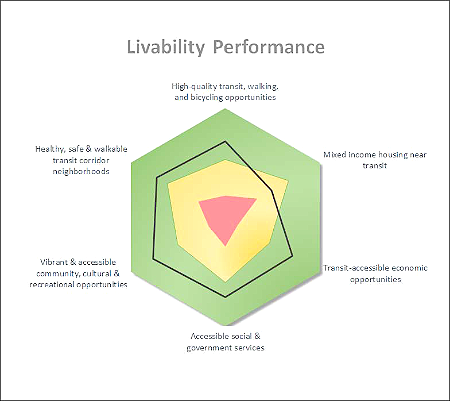Practical Planning: SDSU Professor Creates Urban Planning Tools for Livability, Equity and Smart Growth

November 30, 2016
Professor Bruce Appleyard and his fellow researchers have created a comprehensive handbook for the U.S. National Academies of Sciences’ Transportation Research Board. It seeks to improve future transit corridor and station area planning and design by improving everyone’s equitable access to opportunities to realize their desired quality of life. Funded by the National Academy of Science, Engineering, and Medicine, the 170+ page handbook is the culmination of years of research. The handbook, Livable Transit Corridors: Methods, Metrics, and Strategies, provides valuable insight on recommended policy strategies to guide for future development. Much of the information is generated from Appleyard’s additional development of a Livability/Smart Growth Calculator, which provides planners, designers, and engineers with a series dashboard graphics that displays how the community/corridor is currently performing on each of the Six Livability Principles of the HUD/USDOT/EPA Partnership for Sustainable Communities, which are as follows:- Provide more transportation choices.
- Promote equitable, affordable housing.
- Enhance economic competitiveness.
- Support existing communities.
- Coordinate policies and leverage investment.
- Value communities and neighborhoods.
When taking into account the statistics generated by Appleyard’s calculator, transportation and land use planners are able to identify the specific strengths and weaknesses in their communities/corridors, and then choose from a series of recommended policy options that can be used to achieve higher level of livability, social equity, and smart growth performance. Appleyard stressed the relevance of ethics, equity and neighborhood access to important destinations and opportunities; he states that these are the triple bottom line for a livable, smart growth futures for our communities. The necessity of ethics in transit corridor planning is of great importance, as it impacts those who might not otherwise live in optimal circumstances, and who are often less able to advocate for themselves. “Our handbook and calculator are designed to help professionals working in the public interest provide equitable & comfortable access to opportunities for people to pursue and/or maintain fundamental quality of life needs, without obstructing livability pursuits society’s less powerful and most vulnerable.” said Appleyard. Providing such understandable readouts of data empowers professionals to implement best practices in corridor and station area planning and design to optimize everyone’s equitable access to opportunities to improve their quality of life, sustainably. “Rather than solving our transportation problems only with transportation solutions, we can actually solve them more sustainably and equitably through smart urban design, land use, and housing solutions,” said Appleyard. By taking this holistic view on transit corridors, the comprehensive handbook and livability calculator are able to provide a great deal of information to the benefit of transit planners. Although the handbook was only published this year, its impact is already being seen; Caltrans, the Governor’s Office of Planning Research and several large international NGOs and and consulting firms have already started to work with the research, handbook, and calculator to address their current challenges.
The content within this article has been edited by Lizbeth Persons.
More PSFA Stories